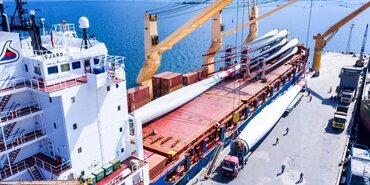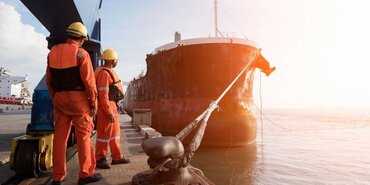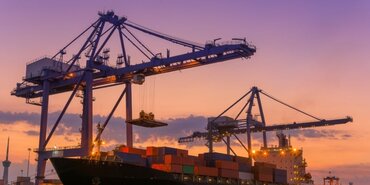TT Talk - How confident can we be about the use of ships' cranes?

A recent accident in which an empty freight container came away from a ship's crane and came down 'from a great height' - fortunately without causing any injury - has re-ignited the whole issue of ships' cranes. This particular incident is still under investigation but the general issue has recently been investigated by ICHCA International's International Safety Panel (ISP) and certain conclusions were reached which deserve wider recognition.
Such cranes can be considered as having two separate functions - cargo handling and non-cargo handling. The latter includes stores cranes on the deck as well as the various lifting appliances in the ship's engine room and elsewhere. One of the accidents investigated involved a stores crane that collapsed into a barge alongside, with the Bosun, who was operating it, luckily falling into a lifeboat on his way down. Otherwise, he would undoubtedly have died. Clearly, apart from the danger faced by an operator, the place where a crane falls in such an incident could also be populated with crew, dockworkers or other personnel.
The collapse was basically occasioned by a severe lack of maintenance of the holding down bolts. These bolts held the crane to the ship's superstructure and all were found on removal to have no holding down capability at all.
Similarly, a cargo crane in a separate accident fell down because the slewing ring had not be maintained properly over a period of time and this directly led to the failure. The main conclusion from this investigation was that not only was there a lack of maintenance but that the regular thorough examinations supposed to be held at least once in every 12 months appeared to have missed the quite substantial failure to maintain. In realising this, the investigation revealed that measurement of wear of slewing rings was not clearly stated in the ILO Code of Practice, which explains how such examinations should be conducted. It also does not clearly state that a minimum number of holding down bolts should be removed for examination and both of these amplifications will be shortly submitted to ILO for consideration regarding amending the Code.
Whilst cargo cranes are subject to legal regimes relating to testing and thorough examination as well as maintenance and these are implemented by the flag states, it is noted that non-cargo cranes are not subjected to any international standard at all.
The cargo handling side comes under ILO Convention 152 on safety and health of dockworkers, whilst any provisions concerning ships' non-cargo handling lifting appliances quite properly should stem from IMO. However, the investigation revealed that there were no such provisions at all. That has been drawn to the attention of the original flag state's investigating branch who, in a further similar accident report, revealed that the ships of that flag had suffered 29 such incidents since 2001. Nothing will happen, however, unless one of the 169 members of IMO proposes a new work item to the Maritime Safety Committee.
The Club would urge that flag states and shipping companies review the arrangements for maintaining and verifying such equipment. Furthermore, following these types of incidents, which are not isolated, the Club would support a call for the IMO to develop provisions relating to non-cargo cranes and ILO to amend its Code of Practice.
- Author
- Staff Author
- Date
- 22/03/2011





